In the years after World War I, a democratic regime that became known as the Weimar Republic was installed in the defeated Germany.
Actually this name was given a posteriori , because the National Constituent Assembly was held in the city of the same name, although the official denomination was still the German Empire. Like other democratic systems of the time, it suffered from serious instability politics with continuous coup attempts by the right and revolutionary attempts by the left that were progressively increasing, aggravated by the Great Depression of 1929.
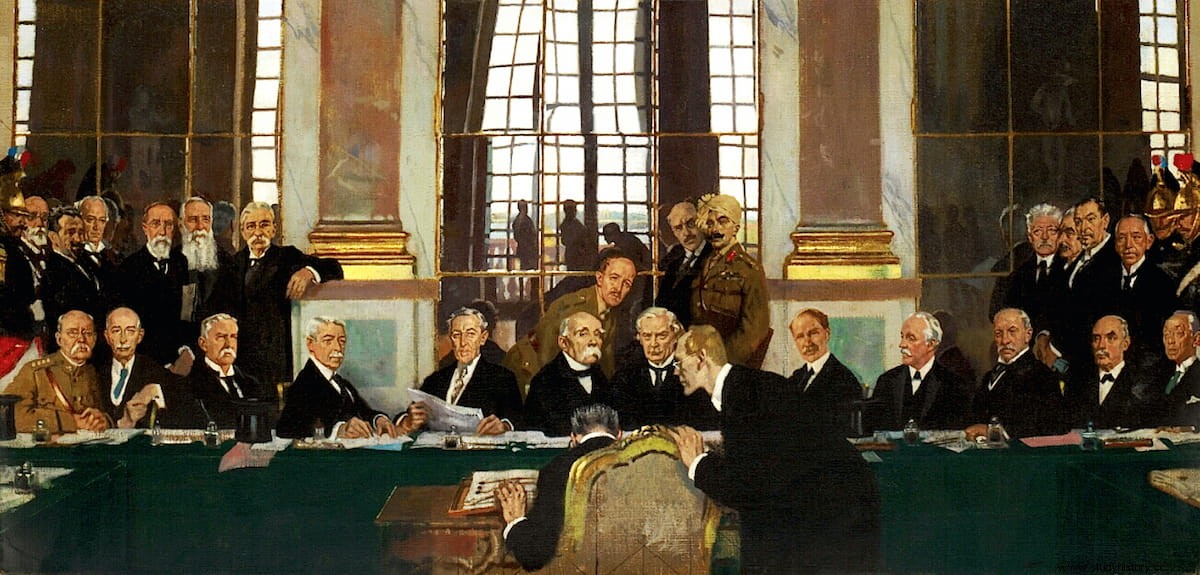
As is known, the end of the war was put into practice with the signing of the Treaty of Versailles , a document sealed by more than fifty belligerent countries on June 28, 1919 after six months of negotiations (the armistice took place in November 1918) and by which Germany had to assume responsibility for the conflict, pay an exorbitant compensation (something it did not finish doing until 2010), deliver a considerable series of territorial compensations, adopt a corpus of democratizing measures in political but also labor matters and proceed to national disarmament , reducing its army to one hundred thousand precariously equipped men (without heavy material, fleet or air force), dispensing with the General Staff and prohibiting the arms industry.
Many of the ex-combatants then found themselves faced with the reality of returning to normal life, an adaptation that many of them found tremendously difficult. The solution was to join traditional organizations, existing since the 18th century and called Freikorps .
The Frank Corps, which is its meaning, were irregular units made up of volunteers imbued with a strong nationalist, anti-Semitic and conservative spirit, as well as the camaraderie typical of their war experience, who focused their attention on planning coups and confronting groups. communists.
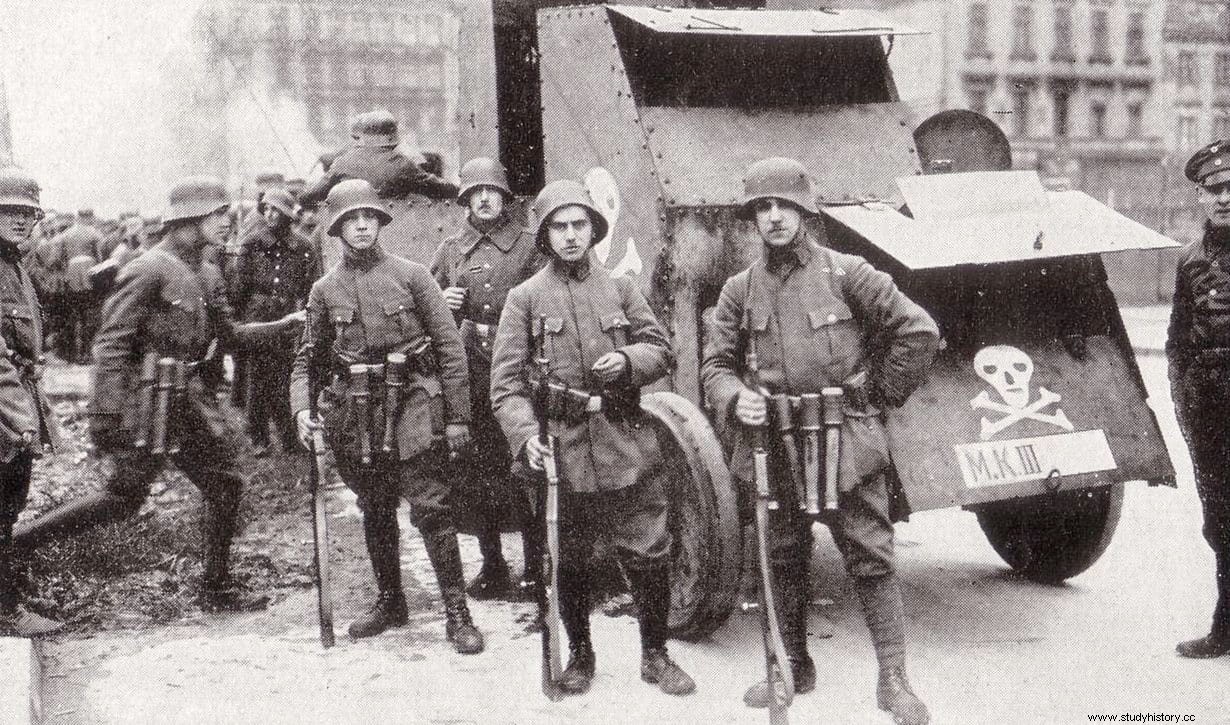
In reality, they were not something exceptional, since if there is something that characterized the Weimar Republic, it was the proliferation of paramilitary groups , some conceived as armed arms of the parties but others created separately.
The difference with the Freikorps was that these, in general and with few exceptions, enjoyed official protection as an extension of the state in the streets to curb Marxism, especially since the Spartacist uprising of January 1919.
Because the communists, seeing the panorama, had also formed their own gangs, the Räterepubliken . One and the other used to try to bust their respective acts and end up colliding violently.
This continuous situation of street altercations deeply annoyed the normal forces of order, to the point that when at the end of 1919 the government openly created a new paramilitary unit called SIPO (Sicherheitspolizei ), the German police called a demonstration against it. However, SIPO endured (and today is the base of the green-uniformed police), just as the other groups continued to proliferate.
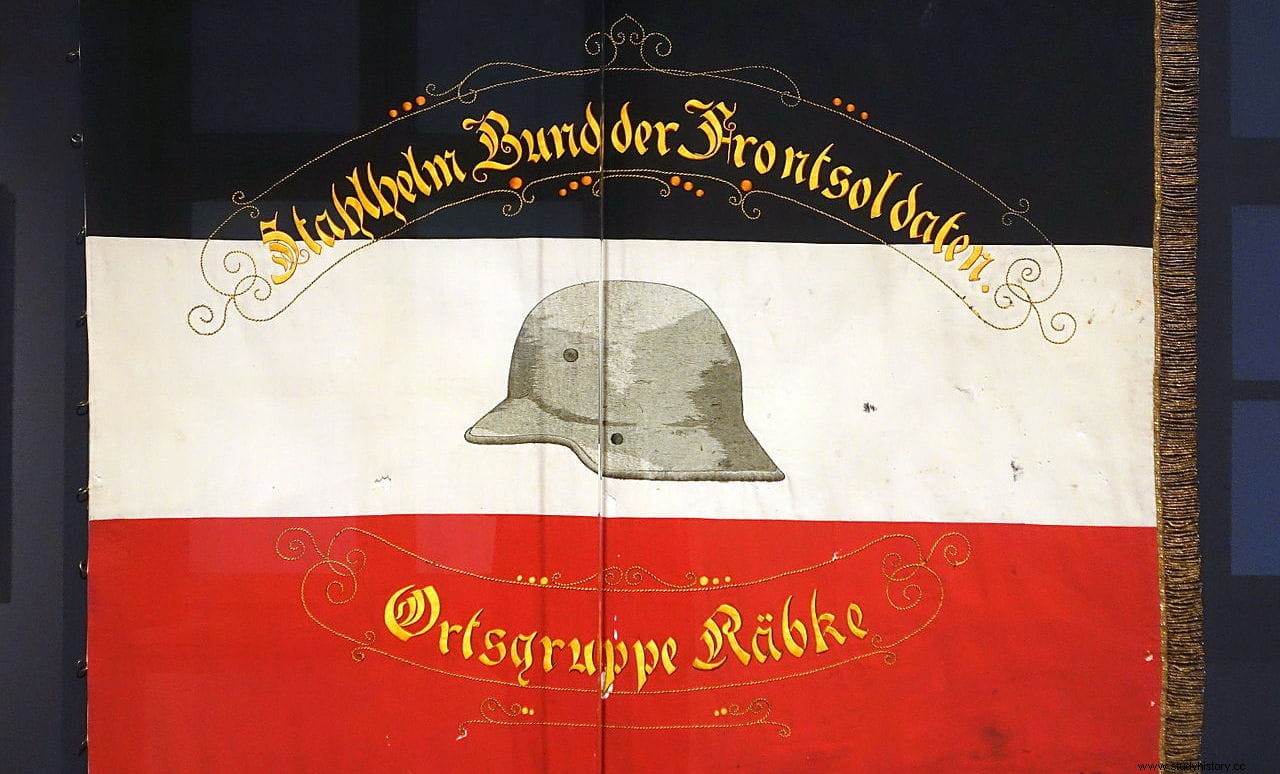
The executive decided to dissolve them after 1920, when the critical post-war period had passed and the economy began to function incipiently, but some of the most radical continued their activity and even tried to stage a coup, the Putsch of Munich .
Several of them, like the Stahlhelm (Steel Helmets), the Kampfbund (Fighting League) or the Sturmabteilung (Assault Sections, better known as SA) were linked to what would later become Nazism and formed the structural basis of their organization, while the Rotfrontkämpferbund (Red Front of the League of Fighters) or theRote Ruhrarmee (Ruhr Red Army) were on the opposite side and had an obvious relationship with communism .
However, even the centrist tendencies they had their arms armed. Perhaps the most important was Reichsbanner Schwarz-Rot-Gold (Black-Red-Gold Imperial Flag), close to the SPD and DDO parties (social democratic and liberal respectively).
Now, without a doubt, the most unique was the Eiserne Front o Iron Front because it did not align itself with any specific trend and had a curious anti-communist but also anti-monarchist and anti-Nazi ideology.
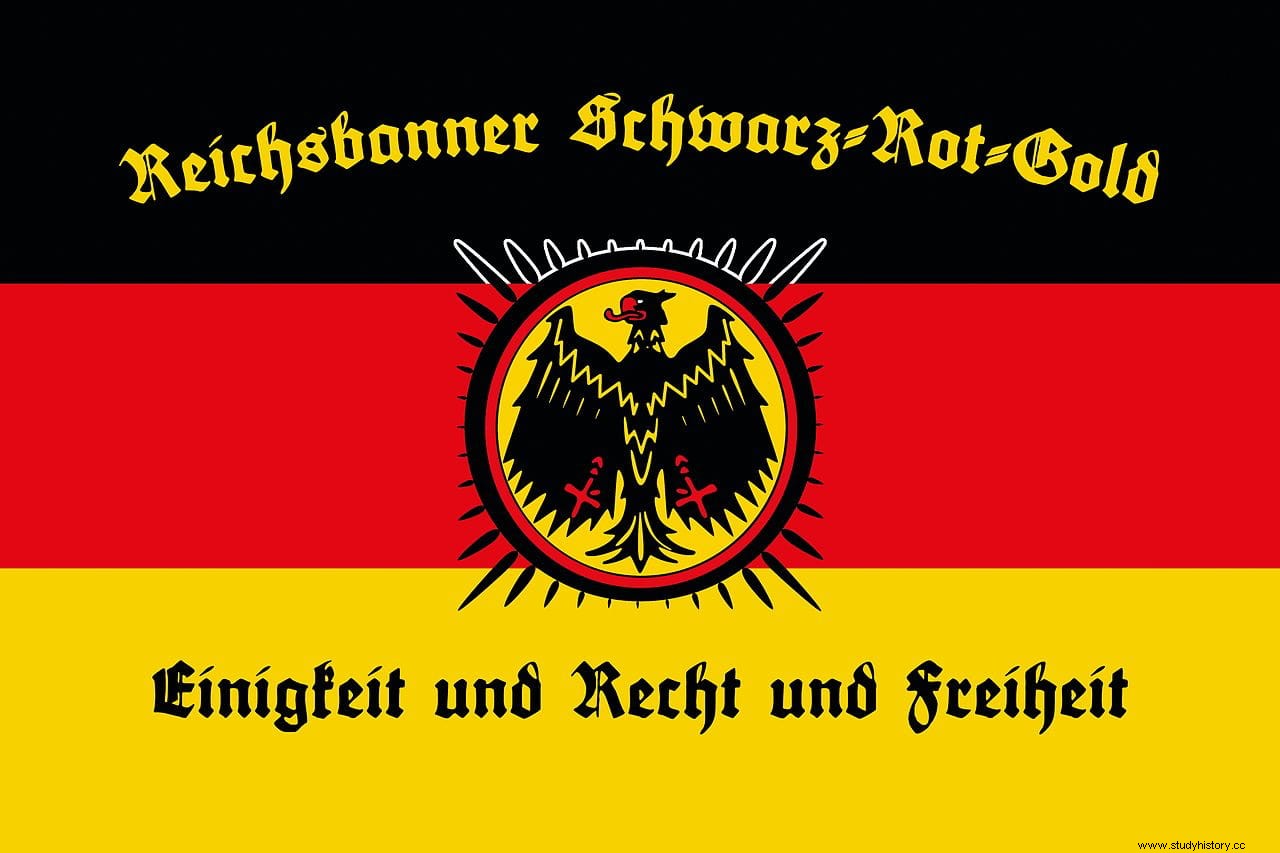
It was born at the end of 1931 by the SPD in collaboration with the ADGB (Allgemeiner Deutscher Gewerkschaftsbund , a union confederation that would disintegrate with the economic crisis of 1929 and would end up being absorbed by the Nazis), the Reichsbanner Schwarz-Rot-Gold (a militia that brought together social democrats, centrists and trade unionists) and the workers' sports clubs, in order to counteract the power of the Harzburger Front (Harzburg Front), a right-wing opposition coalition to the government that included the aforementioned Stahhelm , the DNVP (German National People's Party and the NSDAP (German National Socialist Workers' Party, that of Adolf Hitler).
The activity of the Reichsbanner was notable, organizing massive demonstrations and confronting fascist groups in the streets, despite the fact that the SPD did not see this radicalism favorably.
But the Iron Front attracted the most extreme and combative sector, the youth, and it was impossible to counteract its increasingly pronounced revolutionary tone, often expressed by raising the word attack and derivatives. In fact, the Reichsbanner , the aforementioned militia of the Social Democratic and Liberal parties, refused the invitation to join.
One of the most peculiar elements of the Iron Front was its logo , conceived by Sergei Stepanovich Tschachotin , a Russian biologist and sociologist specialized in the study of propaganda and mass psychology who had worked as an assistant to the famous behaviorologist Ivan Pavlov.

Its design was baptized with the significant name of Círculo Antifascista because it consisted of a black circle with three white arrows pointing to the bottom left.
The meaning of the drawing alluded to the confrontation with what was considered the three great dangers for social democracy:first, the reactionaries , embodied in those who wanted to restore the monarchy of the Hohenzollern dynasty; second the fascists , who in Germany belonged to the Nazi party led by that Austrian corporal who had participated in the aforementioned Munich Putsch in 1923; and third the communists , which, as was happening in other European countries, had been increasing in number and had also made some revolutionary attempt, such as the aforementioned Spartacist uprising of 1919 or the Putsch of the Rühr the following year, always savagely repressed.
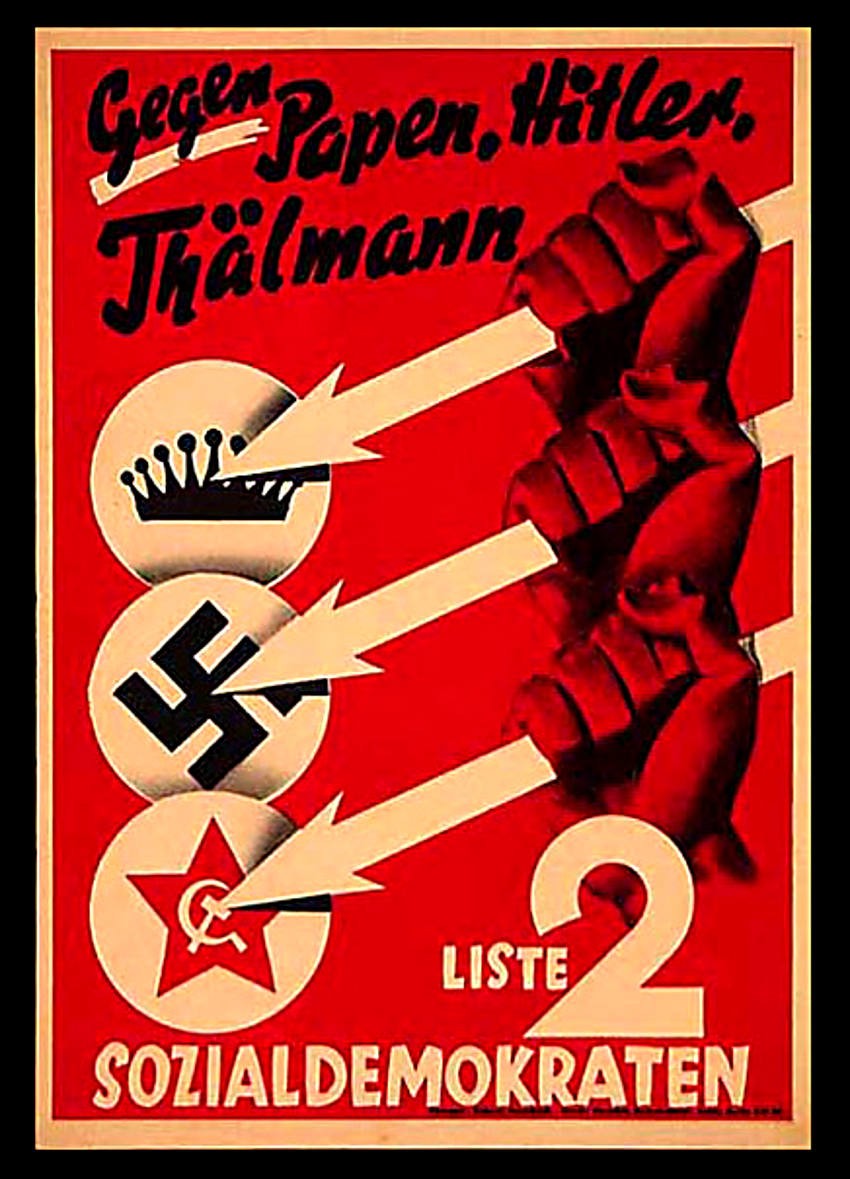
However, other interpretations have been made of the Antifascist Circle. Thus, there are those who think that each of the three arrows represented a member of the Front (that is, SPD, unions and Reichsbanner) or the trio of areas to which the working class was directed (politics, economy and society); It has even been suggested that it had a purely practical function, since the three arrows allow to overlap the arms of the Nazi swastika .
In any case, during the electoral campaign of 1932 the SPD published a poster that seemed to endorse the first theory of the three classical enemies shot by arrows.
It was not long in force in Germany because in January 1933 Hitler was appointed chancellor and, despite being in a minority coalition government, he soon seized power; one of his first decisions was to ban all paramilitary groups except for the related ones.
Interestingly, the logo was rescued from oblivion in 1989 but not in Teutonic land but in the US, where it was adopted by the YPSL (Young People's Socialist League , the Socialist Youth League), although it would be dissolved in 2010.
